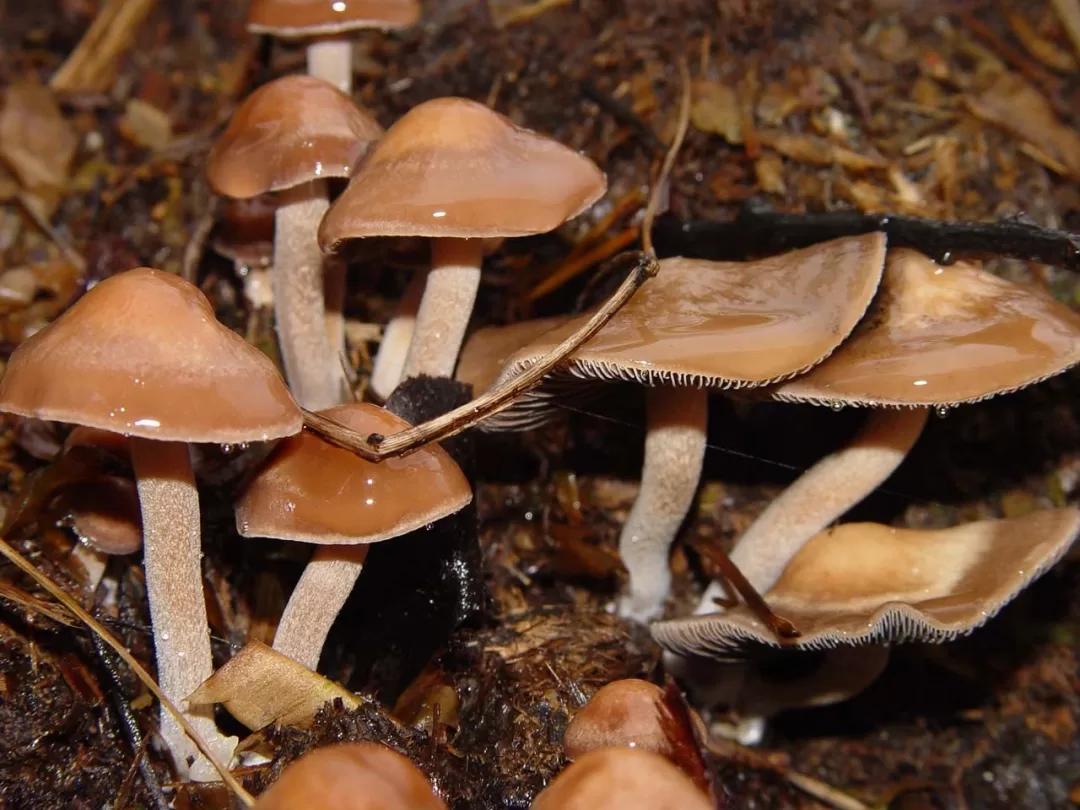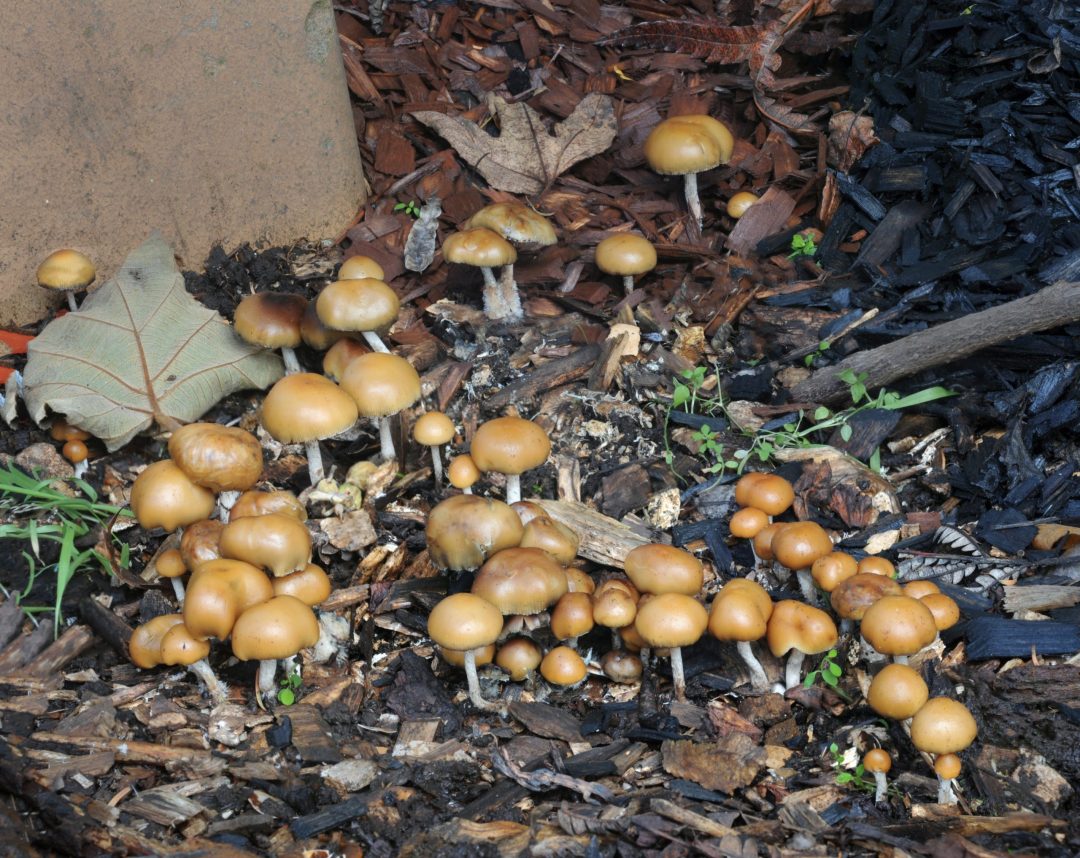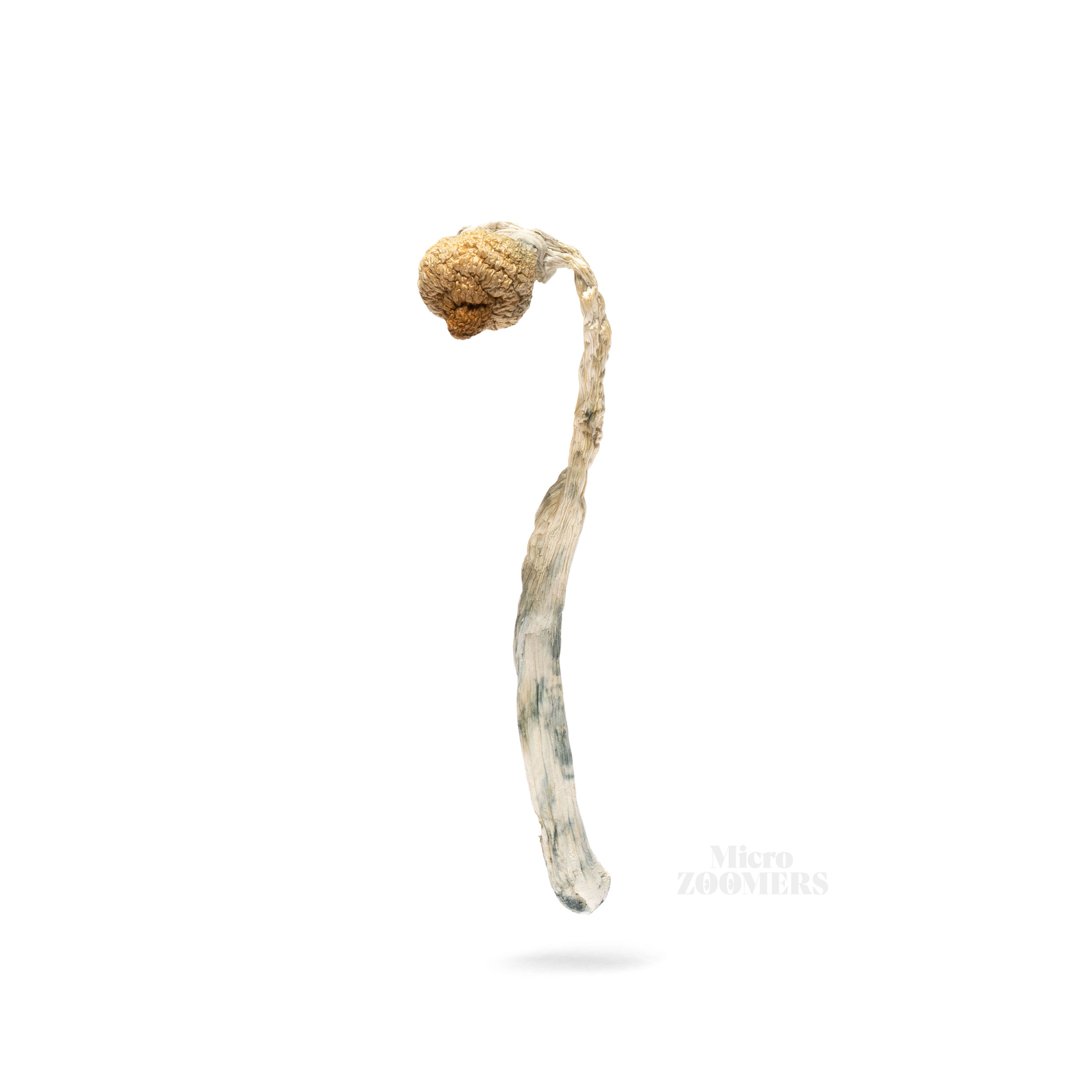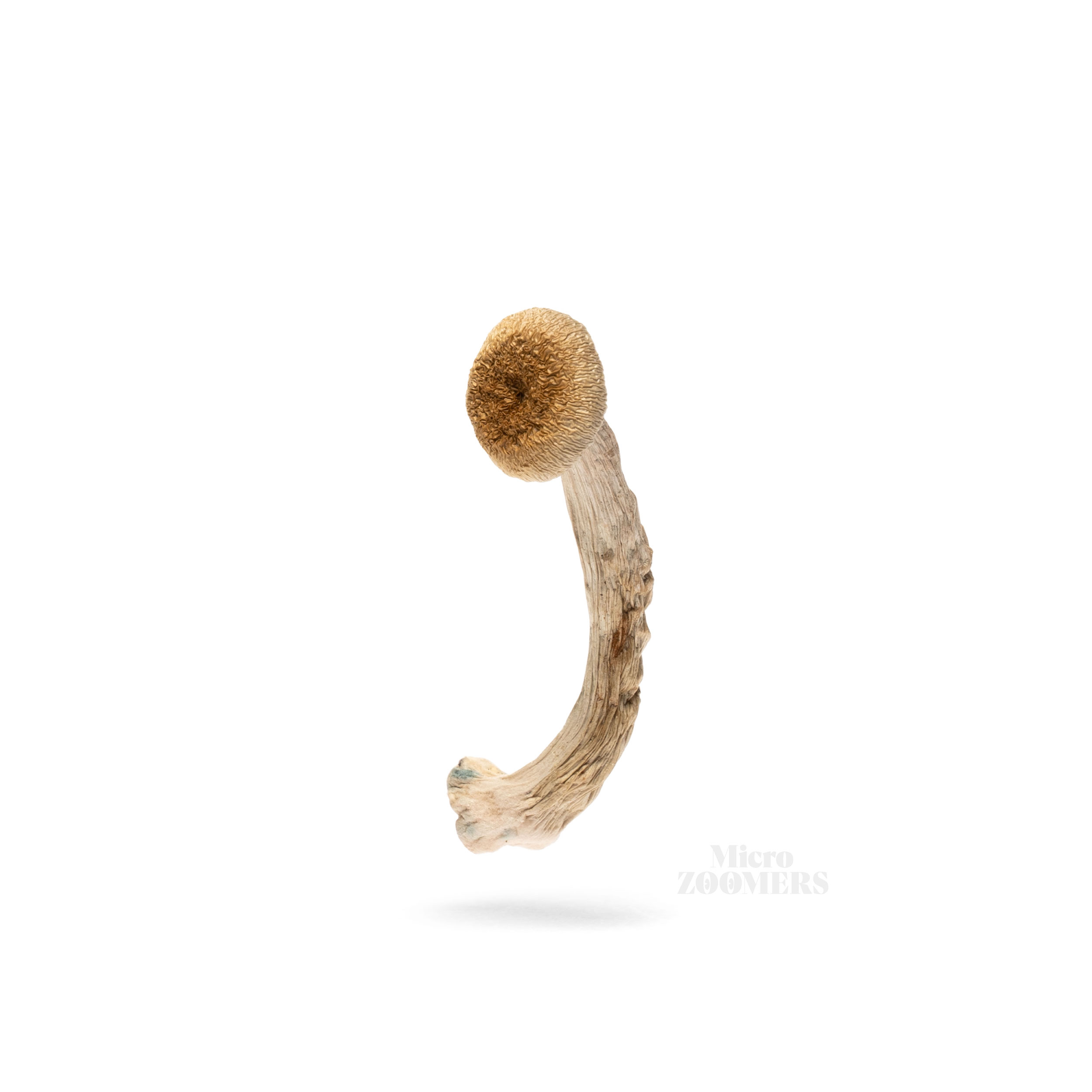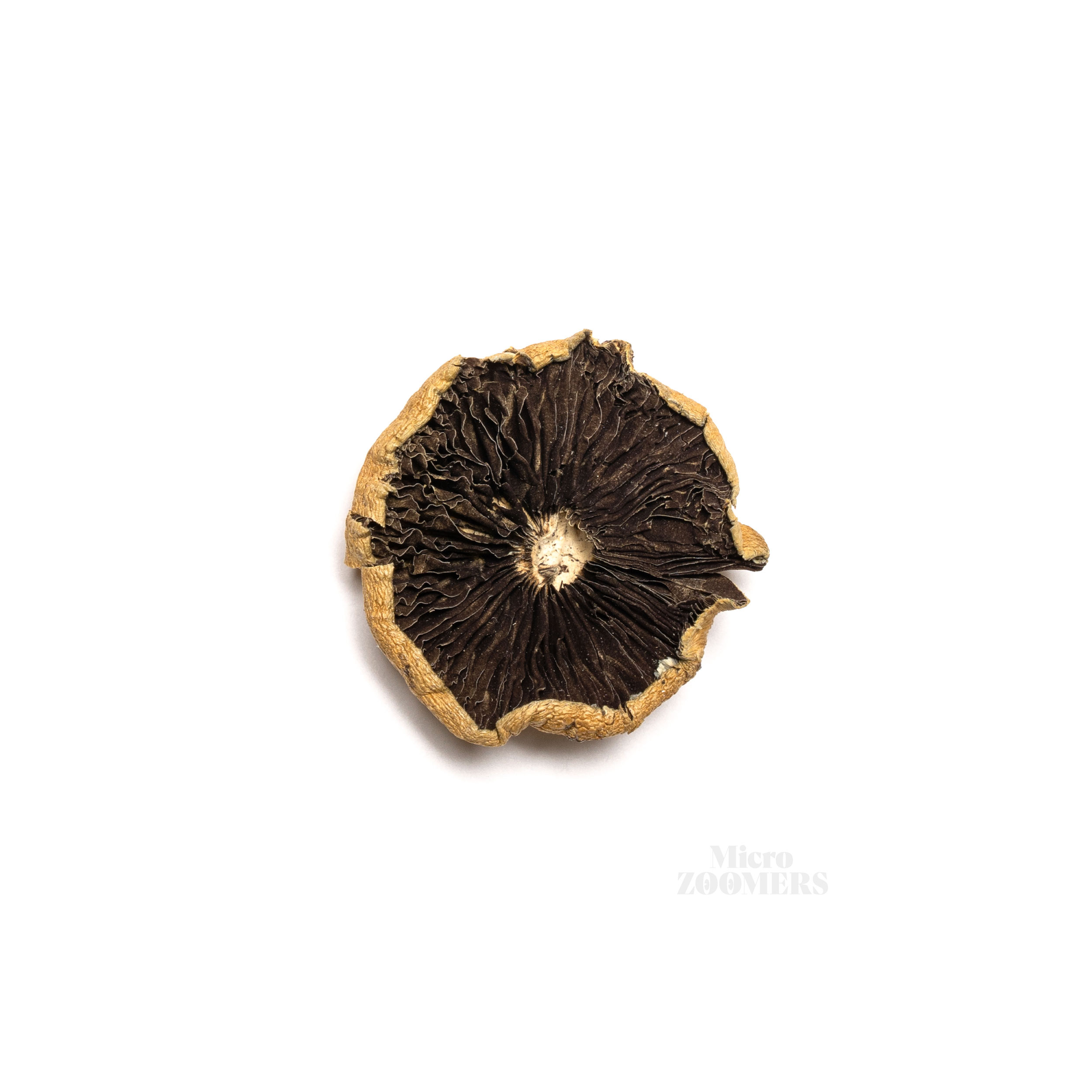CAMBODIAN CUBENSIS
The Cambodian, is another name for Panaeolus cambodginiensis, and was formerly categorized as Copelandia cambodginiensis. The Cambodian aka Panaeolus cambodginiensis, is the famous magic mushroom that was initially found growing around the famous Angkor Wat temple in Cambodia by famous amateur ethnomycologist J.W. Allen.
Allen, who is also called “Mushroom John“, was filming Psilocybes when he came across the first specimen of the Cambodian mushroom. It was growing in water buffalo dung and because the flesh was readily bruising blue, a sign of psilocybin presence, the fungus was identified as active.
We believe the Cambodian is easily recognizable by its slim stem and its “mottled gills” that give a “leopardie” spotted effect, a characteristic of the Panaeoli genus. The Cambodian is larger than its relative Panaeolus tropicalis and generally smaller than Panaeolus cyanescens. Amongst the most beloved exotic strains, today the Cambodian has hybrid descendants, the most famous one being the Cambodian Gold. The Cambodian Gold present a stature closer to a Psilocybe cubensis with a meatier stem and cap.
Because Allen was the first to identify quite a few magic mushrooms, it is not clear if the Allen mushroom stands for the Cambodian, Psilocybe allenii, Psilocybe samuensis (the latter being the best bet) or the Koh Samui strain…Even if it is named after Cambodia, the Cambodian cubensis is widespread throughout the Asian subtropics and in 1993, Allen and Merlin reported the specie from Hawaii as well.
The Cambodian is a moderately highly active psychedelic fungus that has been described by consumers to provide an energetic and long lasting high, with at higher doses fractal visuals and euphoric sensations. Some believe it to be a good candidate for fostering both focus and creativity at work through the practice of microdosing.
Beloved by many, this energetic, playful exotic strain continues to be manipulated by avid mycologists and today, it is said to have considerably gained in potency.
Visual Description
CAMBODIAN CUBENSIS Potency
Habitat Origin



